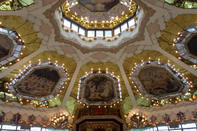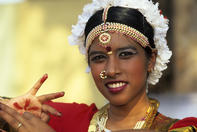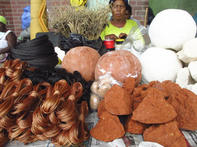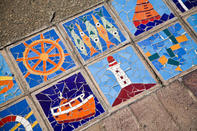A Spiritual Place to Visit
The Mariannhill Mission complex near Durban is one of the world's largest Trappist monasteries but, even so, it’s a wonderfully restful, spiritual place to visit.

The monastery's long echoing arched corridors and architecture are softened by well-tended gardens and the sense of peace that prevails. The Hare Krishna Temple of Understanding in Durban is so ornately beautiful it'll take a few moments to pick up your jaw and remember why you're there; but just seeing the interior is a spiritual experience.
The temple is a wonderland of steeples and towers, mosaics, stained glass and ornamental gardens. Have a delicious curry at the vegetarian restaurant. The impressive, twin-minaret and gold domed Juma Musjid in Durban 'aka Grey Street Mosque' was for many years the largest mosque in the Southern Hemisphere. It has a floor area of nearly 1000m² and some 4 500 worshippers can squeeze in.
Festival of Lights

Durban's sultry early summer nights shatter into splatterings of lights during Diwali, the Hindu festival that marks the return of Lord Rama from 14 years in exile. For three days Hindu people light various symbolic lamps around their homes and on the final night, fireworks, Catherine wheels and sparklers are lit up in the climax of the festival.
If you don't join in any of the celebrations, make sure you’ve got a clear view of the skies over the suburbs of Chatsworth - Guy Fawkes will forever seem dull after this display.
Mad Muti Medicine Market

Durban's muti market in Warwick Street is an intriguing spectacle of traditional Zulu medicine. It's a bustle of informal trading and sangomas selling mixtures of herbs, snake skins, bird wings, monkey paws and all sorts of plants.
On the pavement and roughly made tables are neat piles and bottles of leaves and animal parts - each with its own function. Find a Zulu-speaking person to take you around, and you'll be opened up to the fascinating world of traditional medicine. © David Bristow
Marvellous Museums

Durban has a plethora of museums such as the KwaMuhle Museum, which portrays the city's history from an African perspective. While the Durban Cultural and Documentation Centre focuses on the history and culture of South Africans of Indian origin.
Other collections may be seen at the Natural Science Museum, Local History Museum, Old House Museum, Campbell Collection and the Natal Maritime Museum. A wide variety of Zulu and Xhosa handicrafts and artworks are sold at the African Art Centre, while the BAT Centre and the Durban Art Gallery are popular venues for art-lovers.